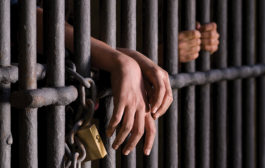TikTok has emerged as one of the leading platforms for snappy false videos about the war in Ukraine which are reaching millions.
With a user base of more than one billion people – more than half of whom are under 30 – TikTok is where many young people have been getting updates about the conflict, as the platform struggles to stem the flow of misleading information.
And you don’t need to look that hard to find dubious content. According to an investigation by NewsGuard, a website that monitors online misinformation, new users could be recommended false content about Ukraine within 40 minutes of joining the network.
While platforms such as Facebook, Instagram and Twitter have been labelling false or misleading viral videos about the war, TikTok seems to be playing catch-up.
The company insists it has stepped up its efforts to combat misinformation.
Here are some of the most common categories of misleading content the BBC has identified on the platform.
Fake livestreams
From the early days of the war, fake livestreams have drawn some of the highest numbers of views on TikTok.
The recipe is simple: a user finds a dramatic video of an old conflict or some military drill, dubs fake audio of a huge explosion or an intense shootout, starts a livestream, and once a sizeable audience tunes in, asks for donations to their channel.
One such account had drawn nearly 30 million views by mid-March. All but three of the account’s livestreams up to that point were short clips taken from a YouTube video of old Ukrainian military training, dating from 2017.

At one point, a fake audio track of gunshots became so popular that it appeared in more than 13,000 videos.
Users can react to livestreams by sending the accounts points that can be converted into cash.
“It seems like a lot of the looped scary livestreams were likely created with the hopes of earning money via TikTok’s gifting system,” says Abbie Richards, an independent researcher who creates videos with a focus on the dangers of misinformation.
Most of the fake livestreams can be easily found under popular hashtags such as #Ukraine or #UkraineWar.
“The content is intended to blend in with all the other information available on the topic,” says Ms Richards.
Source: BBC




















































